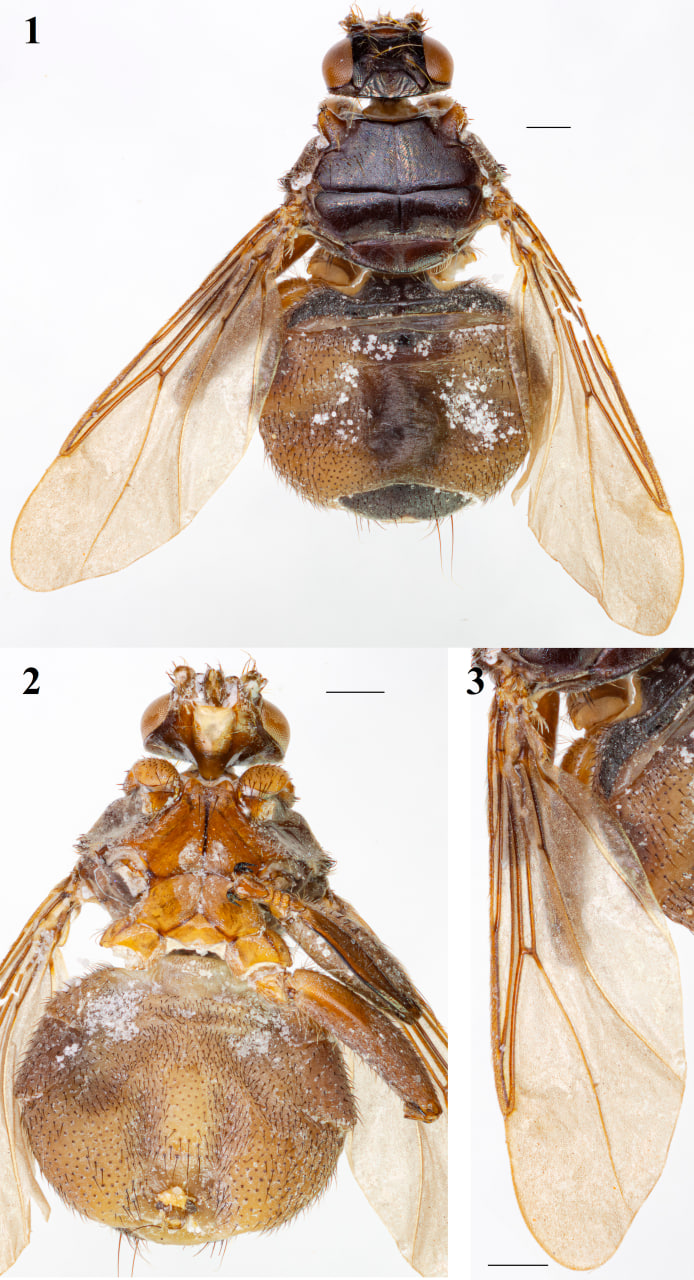
Studying the taxonomic status of different groups of organisms allows us to further study the evolution of different taxa and more accurately predict the features of biology of new species. Hippoboscidae is a highly specialized group of blood-sucking flies. These parasites, living in the fur and feathers of their hosts, have a worldwide distribution and are carriers of many dangerous diseases in both mammals and birds. The genus Icosta is the largest genus of blood-sucking flies. The species Icosta holoptera was described from Brazil by 1 female. Later, a male of this species was described there, in the New World.
Until now, this species has been divided into two subspecies, the nominate I. holoptera holoptera, distributed in the United States (Massachusetts, Ohio, Pennsylvania, South Carolina, Wisconsin), Brazil (Rio de Janeiro State), and Colombia, and I. holoptera omnisetosa, known from New Guinea, the Philippines, Malaysia, China, Japan, and the Amur Region of Russia. I. holoptera holoptera has been found on the Red-winged Tinamou, a ground-dwelling bird from central and eastern South America, Aramides saracura, found in Argentina, Brazil, Paraguay, and Uruguay, Thamnophilus unicolor grandior, distributed in Colombia, Ecuador, and Peru, and I. holoptera omnisetosa on members of the Gruiformes and Charadriiformes.
The study of the morphology and biology of the bloodsuckers Icosta holoptera holoptera and I. holoptera omnisetosa showed that they are two separate species. As of now, the subspecies I. holoptera omnisetosa becomes the species I. omnisetosa. In Russia, this fly is found in the Amur Region, and, according to new data, in the Chukotka Autonomous Okrug.
The article was published in the journal Far Eastern Entomologist: Nartshuk E.P., Yatshuk A.A., Tomkovich P.S., Matyukhin A.V. Taxonomic status of Icosta omnisetosa Maa, 1969, stat. n. (Diptera: Hippoboscidae) is upgraded to species rank Number: 508, Pages: 27 - 32.
